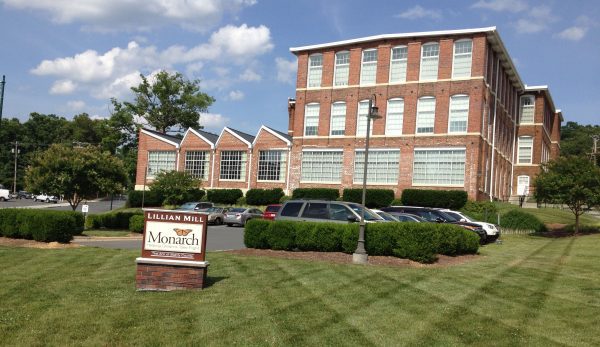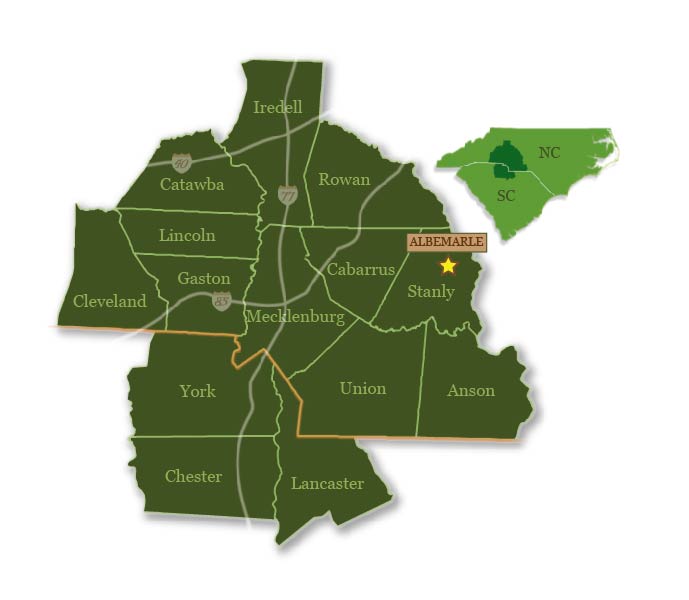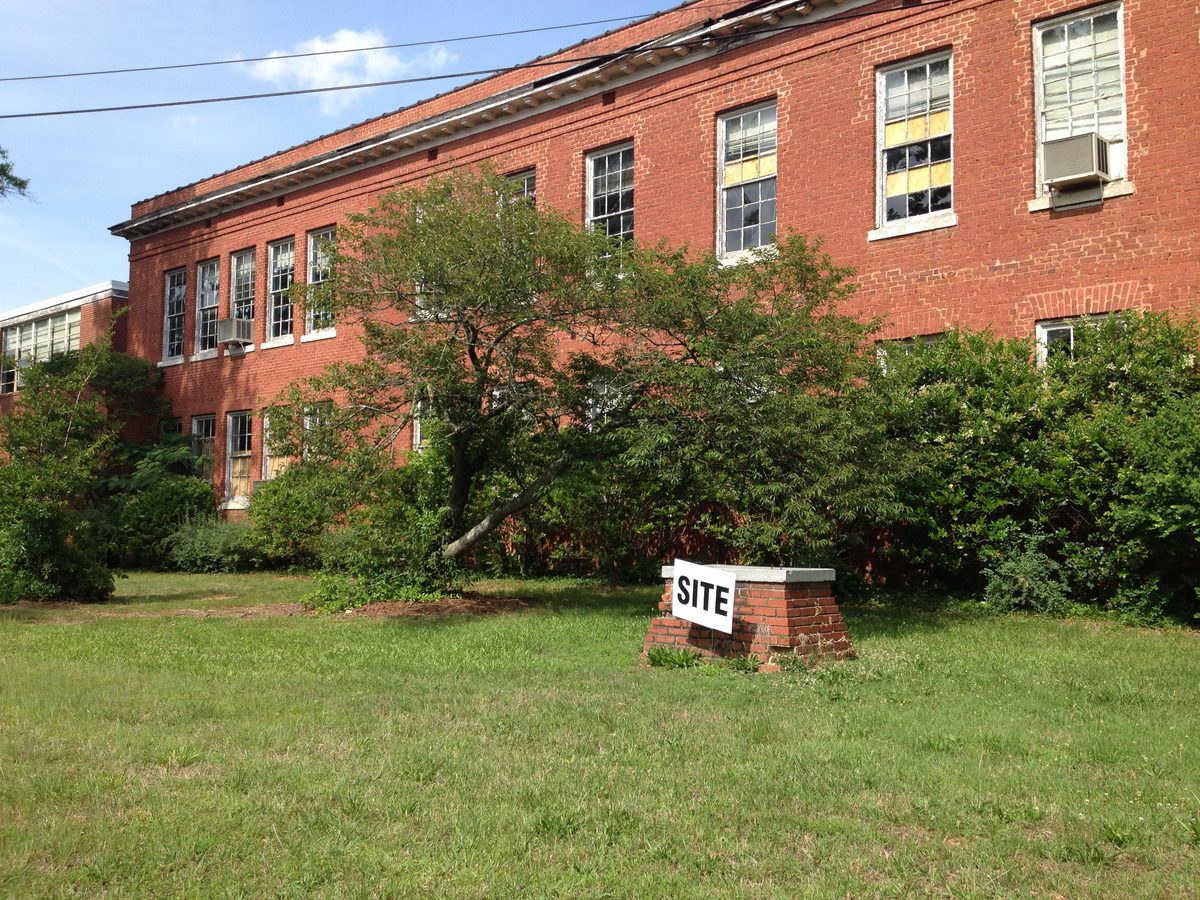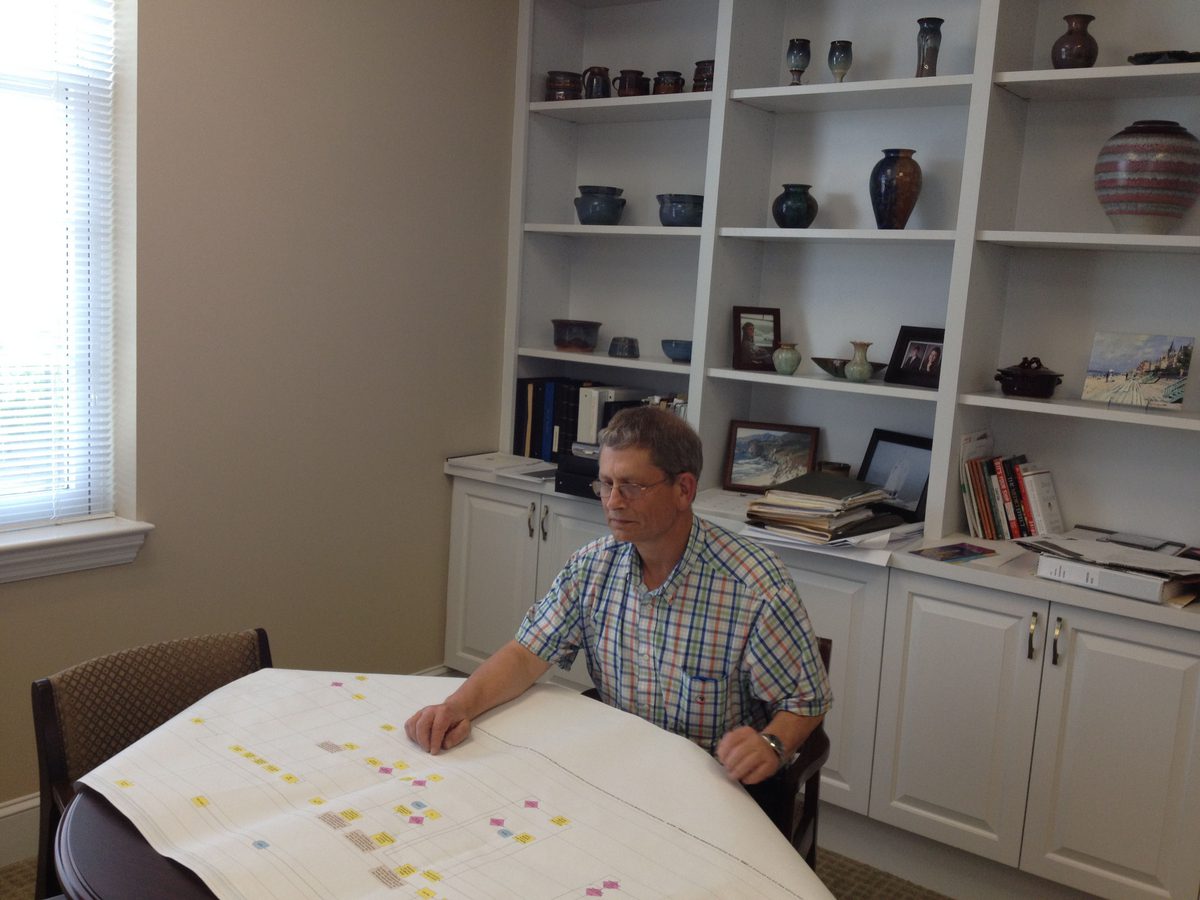Talk of the Towns: Albemarle

 In this new series, PlanCharlotte visits planners from around the 14-county Charlotte region. In this first installment, we head east to Albemarle. Much of the Charlotte region is fast-growing, but Albemarle’s population has remained flat. Keith Wolf has been with the city’s planning department since 2004 and planning director since 2011. He talked about economic development efforts, downtown revitalization and historic preservation. His remarks were edited for brevity and clarity.
In this new series, PlanCharlotte visits planners from around the 14-county Charlotte region. In this first installment, we head east to Albemarle. Much of the Charlotte region is fast-growing, but Albemarle’s population has remained flat. Keith Wolf has been with the city’s planning department since 2004 and planning director since 2011. He talked about economic development efforts, downtown revitalization and historic preservation. His remarks were edited for brevity and clarity.
Are you expecting growth in Albemarle, or trying to attract it?
Keith Wolf: Our population numbers have been pretty flat at right around 15,000. Since 2008, we haven’t had much residential growth. And we haven’t had any new industries. But in the last six months, things are starting to turn around.
What we have coming in now are two straight apartment complexes. Then, we’ve got an old elementary school that had been sitting (vacant) for about eight years. The Landmarks Commission wanted to do apartments in that school. That’s in the local historic district, so they have to maintain the outside of the building in its historic character. They’re going to have 53 units of senior housing.
It’s near downtown and we’re trying to get more density downtown. (The school) is probably one of the worst things in the neighborhood, and when they fix it up it’s going to be one of the best things in the neighborhood. If that goes through it will be a real plus.
Is this the first downtown residential you will have?
Wolf: Yes. There’s an old hotel that we’ve had a bunch of people look at over the last six years. But they can’t make the figures work out to convert it into condos or apartments. They’re working with some consultants in Raleigh on a study for what might be most possible there. After that, we’ll try to find some people who can do what they recommend.
We’ve also been trying to get people to renovate some of the upstairs in these buildings downtown, but that really hasn’t caught on yet. And we have some incentives for that. It’s kind of expensive to do. But there’s room for a lot of residential upstairs if we can get the incentives right.
Someone did renovate the old Lillian cotton mill near downtown. It has five apartments on the third floor and businesses on the two floors underneath. We’re trying to get some more people downtown.
 How important do you view having a traditional downtown?
How important do you view having a traditional downtown?
Wolf: I think that’s one of the things that gives Albemarle character. We have had a local historic district since 2008. Most of these buildings were built between 1900 and 1920. So, some of them are pretty neat in their architectural details. We found out that our downtown, in terms of buildings, is actually bigger than Concord’s downtown. It’s about the same size as Salisbury. Salisbury has been doing the historic preservation for a long time. (Salisbury) looks more vibrant than a lot of the downtowns around here. But they put a lot of effort into it.
If you lose any buildings downtown you kind of lose the character. You can build some new buildings but you won’t ever get back what you had. Most people I’m working with feel the same way. When Walmart came here (in 2005) I was thinking it would really be good if we could get Walmart near downtown instead of out on the bypass (N.C. 24/27), but they had no interest. Since then, they’re actually doing some downtown things. But in small towns, they want to be on the main road.
When that Walmart came, did it drive some of the growth out to the bypass?
Wolf: Well, we already had growth out there. We had three shopping centers. Shopping centers are kind of not in vogue anymore. We had an internal mall north of town in the ’70s and ’80s and then everybody started going to the other side of town, so all the businesses started moving out. The county bought that mall and has a bunch of county offices in it. Then, we had a small mall with Belk and then the tenants came out of there. So, now they don’t have the front facing N.C. 24/27.
We’ve had some plans for a regional shopping center across from Wal-Mart. They’re trying to get some national brand name places.
Western Stanly County has seen some suburban growth. Will Albemarle see any growth from that?
Wolf: It still remains to be seen. Some of the things I’ve read have said there’s going to be more density in the urban areas now, rather than people living far out. Whether it’s gas prices or it just works better and people want to live and work within a reasonable distance. I think it will be slower the farther you are from Charlotte and a main interstate.
A lot of people here are concerned that if their children go to college or they get a professional degree, they’re not going to come back here, and they would like them to come back here.
As far as the environment, are there any challenges or success stories here in Albemarle?
Wolf: CCOG (Centralina Council of Governments) has the brownfields projects, and we’re hoping to get some funds to identify some areas that need cleaning up. There’s a dry cleaner near the Lillian Mill and the vacant (Jeffries) mill on N.C. 24/27. Those would probably be the two areas we would focus on cleaning up. We do have a watershed ordinance. The watershed area comes almost to N.C. 24/27, so some of the building that might come might have to meet watershed regulations. So far that hasn’t really been a big factor.
Young people, especially, are more concerned about the environment. But at this point I don’t think we are going to put any big restrictions, like green buildings, because we’re not getting anybody coming anyway. So it would probably have to be something that would come along later in a small town like this, I would think.
How did the housing crisis affect your city’s growth plans?
Wolf: It pretty well stopped any developers from doing new subdivisions. There was one subdivision they did just before the recession. They were getting maybe three builds a month in that one place even after things got tight. The homes were $120,000 to $140,000, in that range. There were enough people buying in that range that they did pretty well during the downturn. But nobody’s come and said ‘OK, I’m ready to do a new subdivision.’ Usually we would get one every four or five years and they would start building in it.
The apartment complexes you were talking about, are those going in downtown or on the bypass?
Wolf: The school renovation project is near downtown. One of them is going behind Walmart, which is out there on N.C. 24/27, and the other one is going in just off N.C. 24/27.
What would you say is the town’s biggest planning challenge?
Wolf: I think one of the challenges is the kind of small-town mindset of what the priorities are. Planning is not necessarily a high priority for most citizens. Some people just view it as an added layer of regulation. There are only three people in the planning department, but it looks like the council is going to give us a new planning position. It was getting to the point where we couldn’t get to everything we needed to do. Hopefully this will give us more time to look forward instead of just doing permits and enforcement.
We recently had an economic development taskforce. The two top things that came out of that is we need to do a rebranding and we need some more focus on economic development. We have hired a new economic development director.
We’ve also got a business development taskforce. We’re asking how we can make things better for someone who wants to open a business. One of the things that came out of that process was making it easier for businesses to understand what they needed to do for a change of use. (Stanly County) does the building inspections, and Albemarle does the zoning. In zoning, people come and ask, ‘Can I do what I want to do?’ and we can tell them that. But the building inspections might be more specific. [W]e’re working on a document to outline everything a new business needs to do and to try to make it an easier and shorter process.
In your career here in Albemarle, what is the planning strategy or technique you’re most proud of?
Wolf: We just did a small area plan for the area around the old elementary school. I basically had to stop everything I was doing last December and focus on that. We had to look at every house and every building and give it a grade. When we turned it in, the landmarks department said this is one of the best plans they’d seen, and they think they’ll be able to get the grant for that. That’s the first time we’ve done a small area plan, and I think it turned out well. It should give us some direction for the future of the area just north of downtown, which (has) some of the older homes that we want to stay vibrant. This is an effort to keep the core residential of Albemarle in good shape.
What’s your biggest planning disappointment?
Wolf: On the other side of town there’s a mill village. Some people are keeping the houses in good shape and some people are not. We’ve got a couple of slum landlords who will buy up 20 of them, and they’re not keeping them up. We have a minimum housing program and we try to get the landlords to fix the problems, but if the house keeps going downhill we consider it for demolition. A few years ago, the list of houses (scheduled for demolition) was getting bigger. We’ve been trying to do four a year. We probably need to do 10 a year. It’s a last resort, but if a house is just beyond repair, we need to get those out of there and then try to get some infill going. We don’t really want to tear houses down; we want to incentivize people to fix them up. But we haven’t figured out a way to do that.
What do you think will be the next big thing as far as planning in Albemarle?
Wolf: We’ve looked at ideas about maybe having an incubator where people can start up small businesses. I think we’ll probably put a lot of thought and resources into economic development until we get that going in the right direction, because we have been pretty stagnant. If that gets going, then we’ll have some extra funds to maybe do some other things. Then there is also some talk about maybe getting an industrial park.
Is Smart Growth or form-based coding on your radar?
Wolf: I don’t think we really need to go to a form-based code because we don’t have much going on. That has been helpful in some of the quicker growing areas. For Smart Growth, we have added some things like we require developers to put sidewalks in. For 20 years we had people putting developments in with no sidewalks at all, no walkability. We’ve had a few infill projects in the big parking lots.
One of the things the city did before I got here was do away with their parking requirements. The government was deciding how much parking you needed, and they were over-guessing. So you had these humongous areas of parking places with no trees. So we don’t have any parking requirements, except for auction houses, for some reason. Developers are glad that we don’t have parking requirements. What we do have is landscaping requirements for parking lots over 10 spaces.
We added a street tree requirement for new developments. In our subdivision ordinance, we added a 10 percent requirement for open space. When we did that, people were just sticking it at the end or saying, ‘There’s a ravine over here.’ Now we said it has to be near the middle of the subdivision.
We also added the requirement that if you have a subdivision of more than 20 homes, you have to have two exits.
